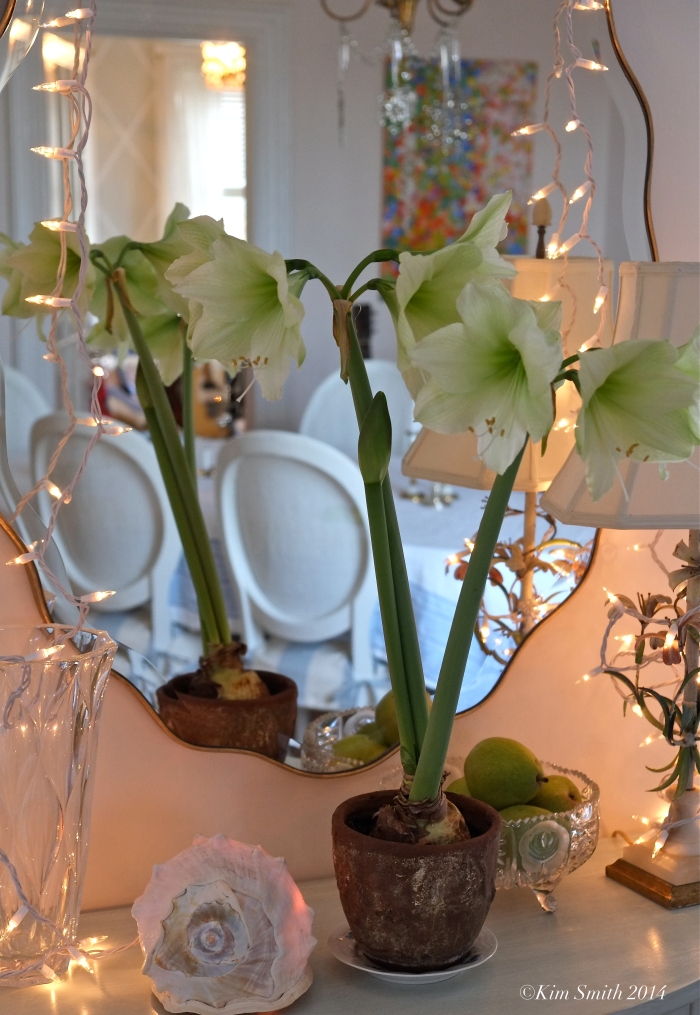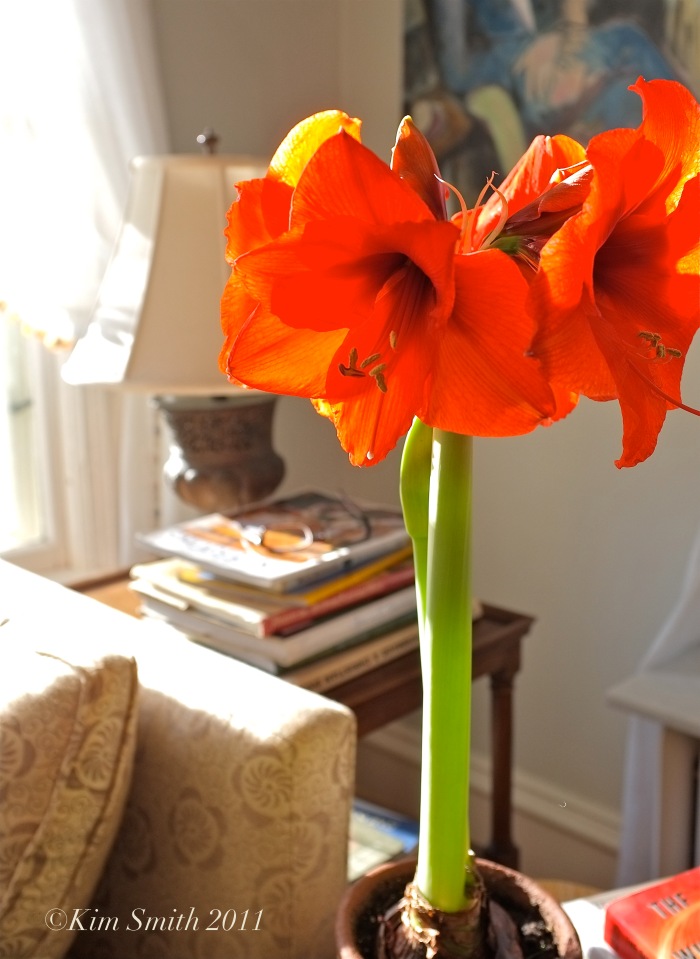The blossoms of the Butterfly Amaryllis are considerably more delicate and petite when compared to the blossoms of most Amaryllis cultivars so this year I grouped three bulbs to a pot for extra beauty. I think my plan was successful 🙂
The Butterfly Amaryllis (Hippeastrum papilio), has to be one of the most stunning of all bulbs to force indoors. Not only that, but unlike other species of Hippeastrum, which need to go dormant, you can grow papilio all year round. The plants will grow larger and produce more blossoms with each passing year!
Hippeastrum papilio is a member of Amaryllidaceae and is native to the tropical forest of the Atlantic Coast of southern Brazil. It is endangered in its natural range but is increasingly propagated among gardeners.
 The following is excerpted from a book that I both wrote and illustrated titled Oh Garden of Fresh Possibilities! Notes from a Gloucester Garden, which was published by David Godine.
The following is excerpted from a book that I both wrote and illustrated titled Oh Garden of Fresh Possibilities! Notes from a Gloucester Garden, which was published by David Godine.
How to Grow Amaryllis ~ Excerpt from Oh Garden of Fresh Possibilities!
Living in New England the year round, with our tiresomely long winter stretching miles before us, followed by a typically late and fugitive spring, we can become easily wrapped in those winter-blues. Fortunately for garden-makers, our thoughts give way to winter scapes of bare limbs and berries, Gold Finches and Cardinals, and plant catalogues to peruse. If you love to paint, and photograph, and write about flowers as do I, winter is a splendid time of year for both as there is hardly any time devoted to the garden during colder months.
Coaxing winter blooms is yet another way to circumvent those late winter doldrums. Most of us are familiar with the ease in which amaryllis (Hippeastrum) bulbs will bloom indoors. Placed in a pot with enough soil to come to the halfway point of the bulb, and set on a warm radiator, in several week’s time one will be cheered by the sight of a spring-green, pointed-tipped flower stalk poking through the inner layers of the plump brown bulbs. The emerging stalks provide a welcome promise with their warm-hued blossoms, a striking contrast against the cool light of winter.
Perhaps the popularity of the amaryllis is due both to their ease in cultivation and also for their ability to dazzle with colors of sizzling orange, clear reds and apple blossom pink. My aunt has a friend whose family has successfully cultivated the same bulb for decades. For continued success with an amaryllis, place the pot in the garden as soon as the weather is steadily warm. Allow the plant to grow through the summer, watering and fertilizing regularly. In the late summer or early fall and before the first frost, separate the bulb from the soil and store the bulb, on its side, in a cool dry spot—an unheated basement for example. The bulb should feel firm and fat again, not at all mushy. After a six-week rest, the amaryllis bulb is ready to re-pot and begin its blooming cycle again. Excerpt from Oh Garden of Fresh Possibilities! ~ Coaxing Winter Blooms
Click here to read more about Oh Garden of Fresh Possibilities.













